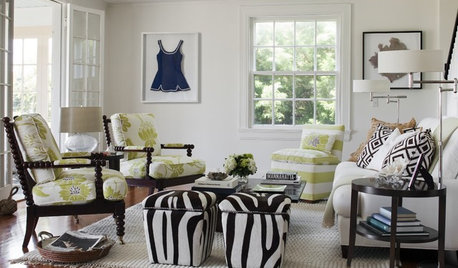Anyone here use cement blocks for raised beds? Questions
AdamM321
20 years ago
Related Stories

BEDROOMSThe Cure for Houzz Envy: Master Bedroom Touches Anyone Can Do
Make your bedroom a serene dream with easy moves that won’t give your bank account nightmares
Full Story
KITCHEN DESIGNThe Cure for Houzz Envy: Kitchen Touches Anyone Can Do
Take your kitchen up a notch even if it will never reach top-of-the-line, with these cheap and easy decorating ideas
Full Story
LAUNDRY ROOMSThe Cure for Houzz Envy: Laundry Room Touches Anyone Can Do
Make fluffing and folding more enjoyable by borrowing these ideas from beautifully designed laundry rooms
Full Story
KITCHEN CABINETSChoosing New Cabinets? Here’s What to Know Before You Shop
Get the scoop on kitchen and bathroom cabinet materials and construction methods to understand your options
Full Story
DECORATING GUIDESHere's How to Steer Clear of 10 Top Design Don'ts
Get interiors that look professionally styled even if you're taking the DIY route, by avoiding these common mistakes
Full Story
FARM YOUR YARDHow to Build a Raised Bed for Your Veggies and Plants
Whether you’re farming your parking strip or beautifying your backyard, a planting box you make yourself can come in mighty handy
Full Story
DOORS5 Questions to Ask Before Installing a Barn Door
Find out whether that barn door you love is the right solution for your space
Full Story
REMODELING GUIDESConsidering a Fixer-Upper? 15 Questions to Ask First
Learn about the hidden costs and treasures of older homes to avoid budget surprises and accidentally tossing valuable features
Full Story
SPRING GARDENINGInspiring Raised Beds for Fall and Spring Planting
Make Your Next Vegetable Garden Even Better with Beautiful Boxes and Paths
Full Story
GARDENING GUIDES8 Materials for Raised Garden Beds
Get the dirt on classic and new options for raised vegetable and plant beds, to get the most from your year-round garden
Full Story





Ray Scheel
LUCKYLOU
Related Professionals
Walnut Landscape Architects & Landscape Designers · Surprise Landscape Contractors · Cliffside Park Landscape Contractors · Darien Landscape Contractors · Holland Landscape Contractors · Indianapolis Landscape Contractors · Wallingford Landscape Contractors · Waltham Landscape Contractors · Winter Gardens Landscape Contractors · Golden Valley Landscape Contractors · Citrus Heights Fence Contractors · Diamond Bar Fence Contractors · Falls Church Fence Contractors · Rome Fence Contractors · Spring Fence Contractorsmlwhitt
AdamM321Original Author
AdamM321Original Author
AdamM321Original Author
Ray Scheel
sporthorses
AdamM321Original Author
chris_hamel
sweetbrat
AdamM321Original Author
chris_hamel
fuzzy
lil_rhody
MOMof3m_s
lil_rhody
AdamM321Original Author
John1931
bdot_z9_ca
John1931
bdot_z9_ca
ceresone
Alyce Venice